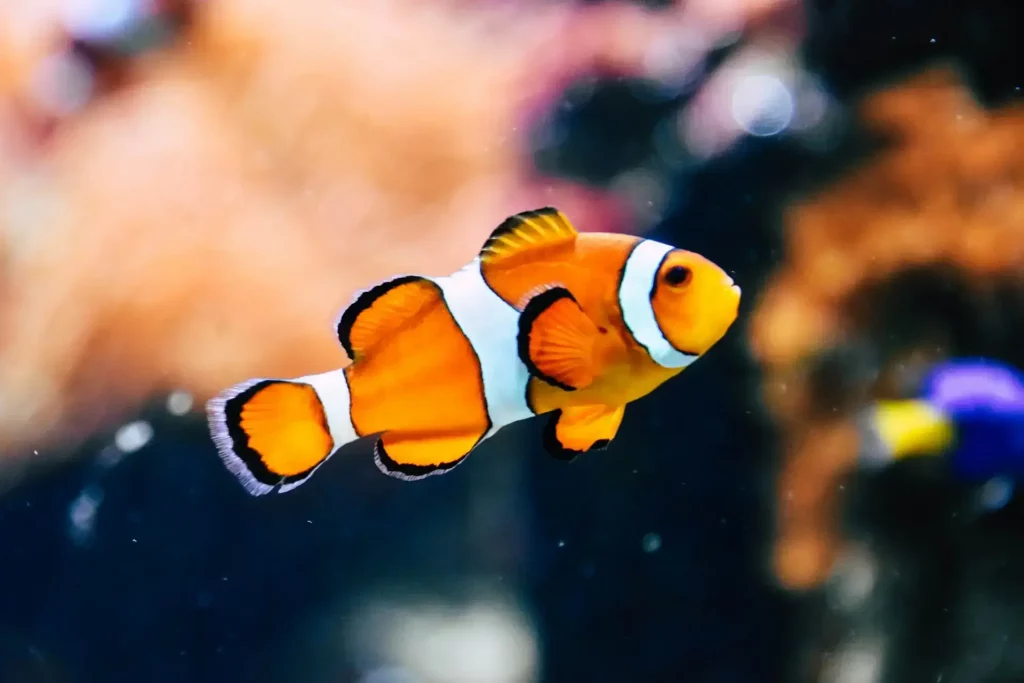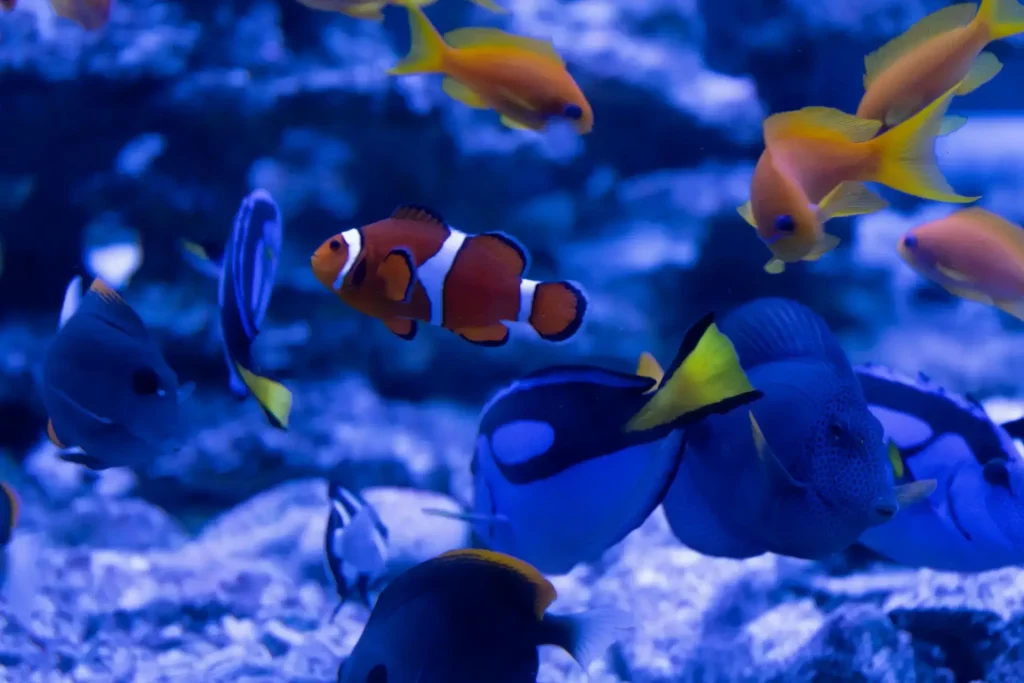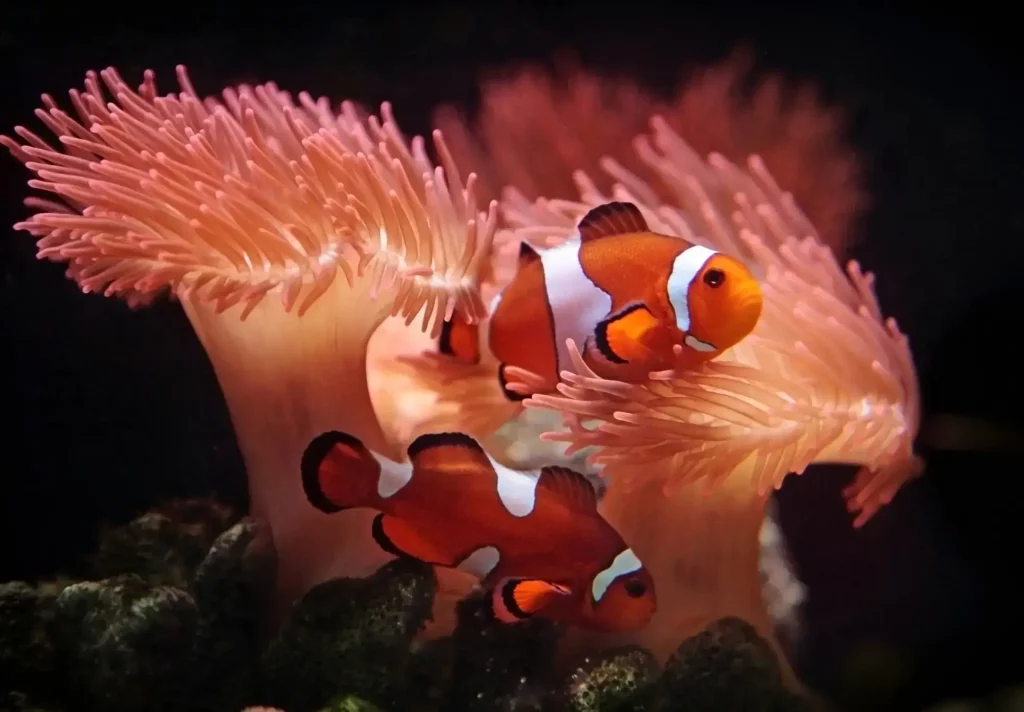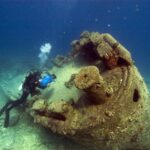What Do Clownfish Eat in Reef Tanks

What are Clownfish and What is Special About Them?
One of the most popular kinds of reef fish amongst aquarium hobbyists is the clownfish. Vibrant and active, these fish are fun to observe and to interact with.
In the wild, all clownfish are born as males, and each school is led by one dominant female – usually the largest in the group. Clownfish are hermaphroditic, and so when the female passes away, the largest male will then become the alpha female of the group.
Clownfish also possess a symbiotic relationship with anemones. They are uniquely able to build a mucus coating which protects them from the poison of the anemone, and thus allows them to live amongst the tentacles. This benefits the clownfish as the anemone protects them from predators (such as larger fish like snappers, triggers, eels and lion fish) whilst also providing leftover food for them. Vice versa, the anemone benefits from the clownfish by also being able to feed off of their scraps.
Though clownfish are commonly seen in the wild being hosted by anemones, they do not require them to survive, and thus will be fine in a tank without them.
Therefore, in terms of what they eat, clownfish are versatile in that they are omnivores with an extremely varied diet. This means a varied diet in an aquarium is crucial to their health and longevity.
What do Clownfish Eat in Captivity?
Due to their diverse diet in the ocean, clownfish are generally not picky eaters when living in aquariums. Naturally feeding on mostly zooplankton, worms, small crustaceans, algae and leftovers from the anemone, clownfish in captivity are extremely flexible to feed.
Common food for aquarium clownfish include a mix of nutrient-rich pellets and flakes, as well as live and frozen fresh foods. A popular combination of foods include brine shrimp, mysis shrimp and fish pellets.
The size of your foodstuff depends on the size of your fish. It might be useful to take into account the form of the food you are choosing to feed your clownfish, and how easily you are able to break the food into the right sizes.
It is important to mimic the natural diet of clownfish, and any kind of fish really, to ensure optimal health and growth. In a tank, clownfish are often separated from their anemone habitats which is their main source of food and protection, and will lose access to many kinds of food that they would normally consume in the ocean.

Feeding Mechanisms and Practices
Clownfish prefer to feed during the daytime hours, and they generally feed from the water column, not off of the bottom. In the wild, they will usually benefit from the leftovers of the anemone, and only sometimes will they venture out over the reef for smaller fish and shrimp to hunt, but normally they will stay quite close to their home base anemone.
Therefore, with whatever food you choose to feed your clownfish, it is important to feed them slowly in order to allow them sufficient time to feed from the water column as the food sinks down.
When it comes to feeding schedules, the general rule of thumb is about 3-4 times a day if there are numerous juvenile clownfish, and about 1-2 times a day if you have a well-established adult population.
In terms of food quantities, especially if you are mixing different kinds of food for your clownfish, you can try to follow the eyeball method. This means feeding your clownfish as much food as the size of their eyeball per day.
If you’re trying to feed new clownfish, allow them a few days to adjust to their new habitat and to the food you’re providing. Also, observe how fast they eat the different kinds of foods, and if there are any leftovers afterwards.
This will help you gauge how much to feed them next time, and avoid overfeeding as it is unhealthy for your fish and can also decrease the water quality of your tank.
Special Dietary Considerations
Clownfish generally live for about 8 years in the wild and about 12 years in a safe environment, such as an aquarium. The diet that you choose to feed your clownfish will contribute to their health and longevity. There are numerous commercially available clownfish food that are nutritious, prevent diseases, and improve pigmentation. Some of these include;
Reef Nutrition – Provides a selection of fresh foods and pellets that contain vitamins, minerals, color enhancers, and antioxidants.
Ocean Nutrition – Supplies slow-sinking nutritious fresh foods and flakes that give your clownfish more time to feed from the water column.
Conclusion
Diet is a delicate factor to control and maintain when it comes to fish. Clownfish in particular are one of the less complex reef fishes in terms of feeding as they consume a variety of foods in the wild, with and without a host anemone, and thus also in an aquarium. From fish pellets to frozen fresh foods, Clownfish are flexible and not as picky as some other reef fish.
Having said this, it is still important to pay attention to feeding times, quantities, and habits of your own clownfish in order to determine the best diet for them and ensure health and longevity.
Responsible feeding practices amongst aquarium enthusiasts is vital if you are planning on ethically maintaining a healthy tank ecosystem.

FAQs
What kind of food do clownfish eat?
In the wild, zooplankton, worms, small crustaceans, algae and leftovers from the anemone. In a tank, small fish pellets/flakes, fresh or frozen mysis shrimp, brine shrimp, cyclops shrimp, algae tabs and occasionally nori sheets.
Do clownfish eat other fish?
Yes, they will eat small minced fish if they are fed in a tank, but they will not kill and eat other clownfish.
Do clownfish eat anemones?
They might take a nibble from the tentacles if food is scarce, but this generally does not happen and should definitely not be a scenario in a tank environment.
Do clownfish eat their eggs?
Only when food is very scarce. However, as above, should not be the case in an aquarium.





1 thought on “What Do Clownfish Eat in Reef Tanks? Your Complete Feeding Guide”
Comments are closed.